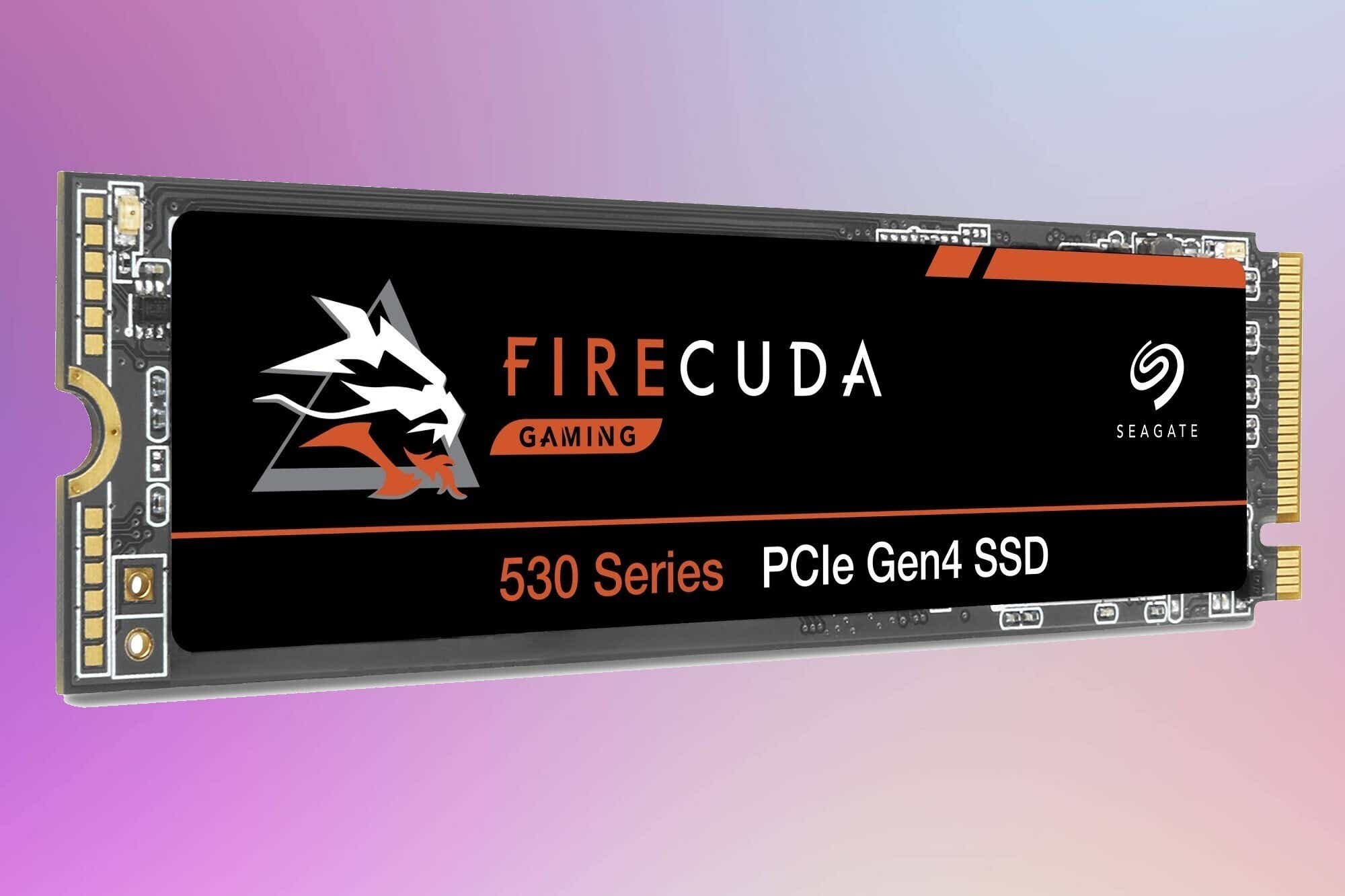 At a glance
At a glanceExpert's Rating
Pros
- Excellent performance
- Available up to 4TB
- Optional heatsink for 1/2TB models
Cons
- Pricey per gigabyte
- Somewhat parsimonious TBW ratings
Our Verdict
WD’s Black SN850X is an excellent, and slightly more affordable alternative to Seagate’s might FireCuda 530. It’s also especially adept at real-world transfers and random operations.
Best Prices Today: WD Black SN850X
WD’s Black SN850X lit up our test meters with outstanding real-world and random performance. It equaled or surpassed the mighty Seagate FireCuda 530 in a couple of tests, and by a rather wide margin in one.
Even if it couldn’t quite match its rival’s sequential throughput under synthetic benchmarks, the SN850’s overall performance makes it a more than viable alternative to Seagate’s best. It’s also a bit cheaper, though its TBW ratings are also far lower.
This review is part of our ongoing roundup of the best SSDs. Go there for information on competing products and how we tested them.
WD Black SN850X: Price and design
As you might guess given our glowing report on performance, you won’t be seeing the WD Black SN850X in the bargain bin. Indeed, while it’s less expensive than the FireCuda 530 at the moment, it’s still not cheap, with an MSRP of $160 for the 1TB model, $290 for the 2TB, and $700 for the 4TB capacity.
Add $20 if you want a heatsink (most modern motherboards provide their own) for the 1TB/2TB capacities. The 1TB and 2TB (tested) versions are single-sided, and I’m guessing the 4TB is double-sided, hence the lack of a heatsink option.
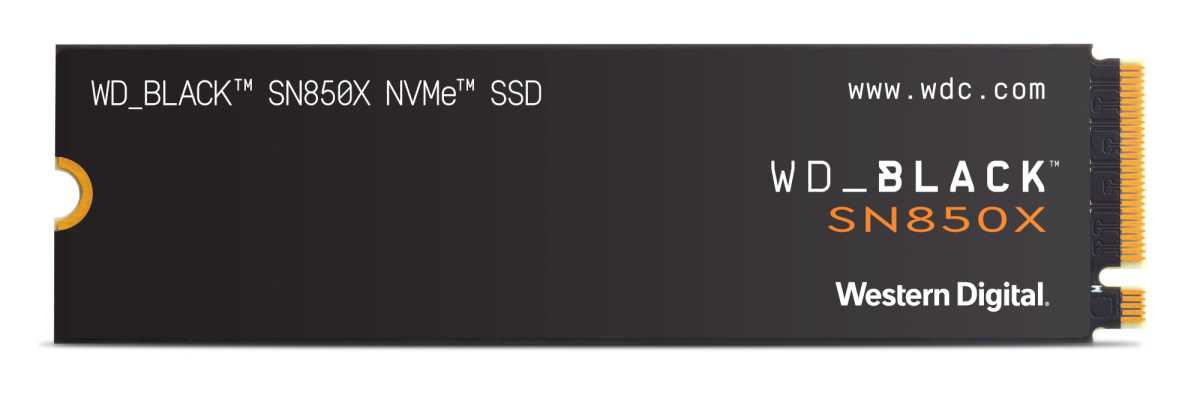
WD
The SSDs themselves sport the usual 2280 (22x80mm) M.2 form factor and are PCIe 4 x4 NVMe types. The NAND is 112-layer TLC (Triple-Level Cell/3-bit) with what the company claims is a Western Digital designed controller. The drive is a DRAM-less (Host Memory Buffer) design.
WD’s solid state expertise comes courtesy of SanDisk, a company it purchased a while back, and that’s the name on the controller.
WD provides a generous five-year warranty, but the TBW (terabytes that may be written) ratings, while about average for cheaper drives, are a bit parsimonious for a top-shelf drive. Basically, 600TBW for every 1TB of capacity—less than half of what Seagate provides for the FireCuda 530.
TBW ratings are like the “or 50,000 miles” on automobile warranty. If you exceed them, the warranty is over whether it’s been one year or five.
WD Black SN850X: Performance
I’ve definitely let the cat out of the bag as regards performance, but I’m guessing you’d like some specifics. I get paid to provide them, so here goes. The SN850X was a smidge slower (mostly writing) in CrystalDiskMark 8’s sequential test. Not by a lot, mind you.

On the other hand, it fairly clobbered its rival in random writes with 32 queues in play. The performance between the two drives (and most others) was very similar with only a single queue, so you can chalk this up to the controller.

Adding everything together, the rival FireCuda 530 comes out on top, though not by a whole lot. The SN850X’s aggregate score is the second-fastest we’ve seen.
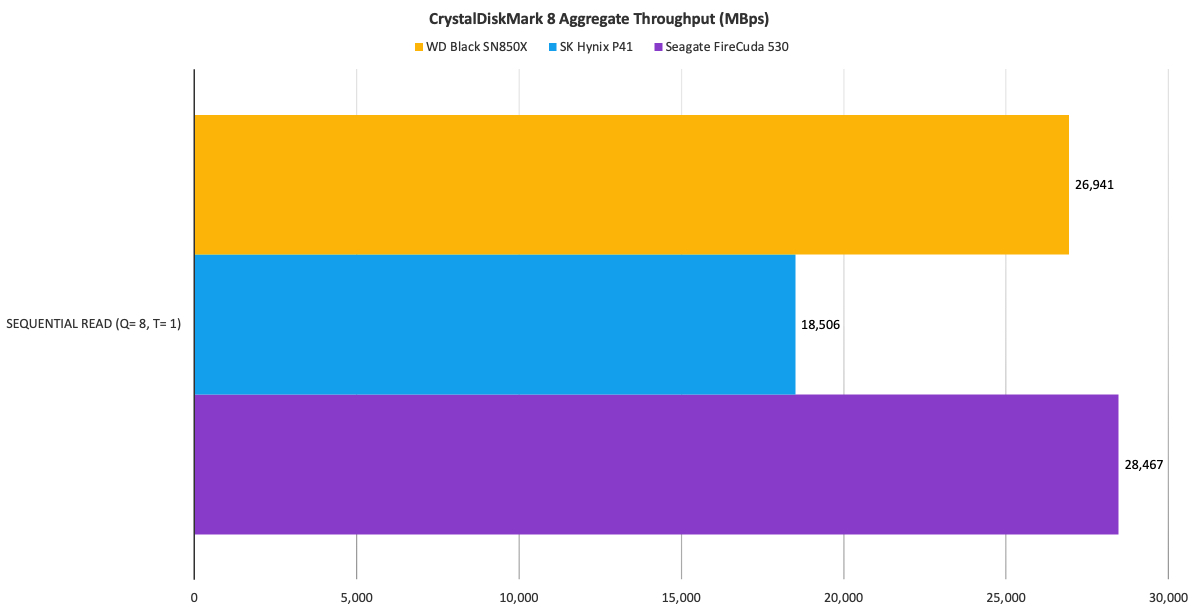
Real-world performance with our 48GB data sets was excellent as well for the SN850X. The aggregate time is the fastest we’ve seen on our new test bed.
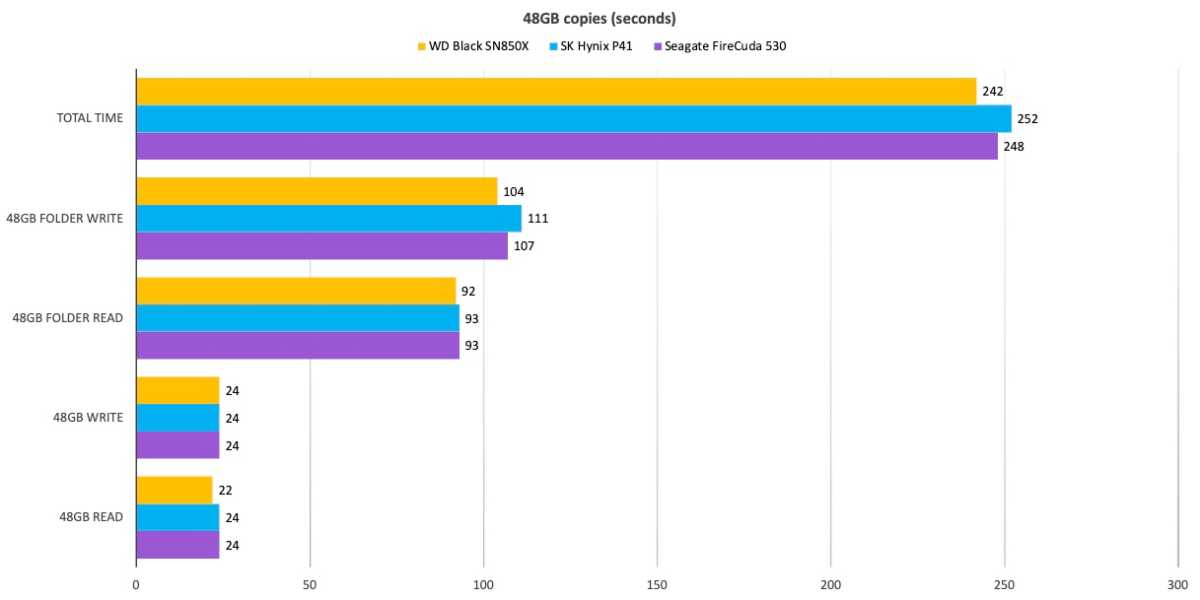
The SN850X once again bested its main rival when writing a single large 450GB file. By a narrow margin to be sure, but a win is a win. The record for a single (non-RAID) drive is 209 seconds by the Teamgroup Cardea A440 Pro—another very fast drive that’s only a bit slower overall than the FireCuda 530 and SN850X.
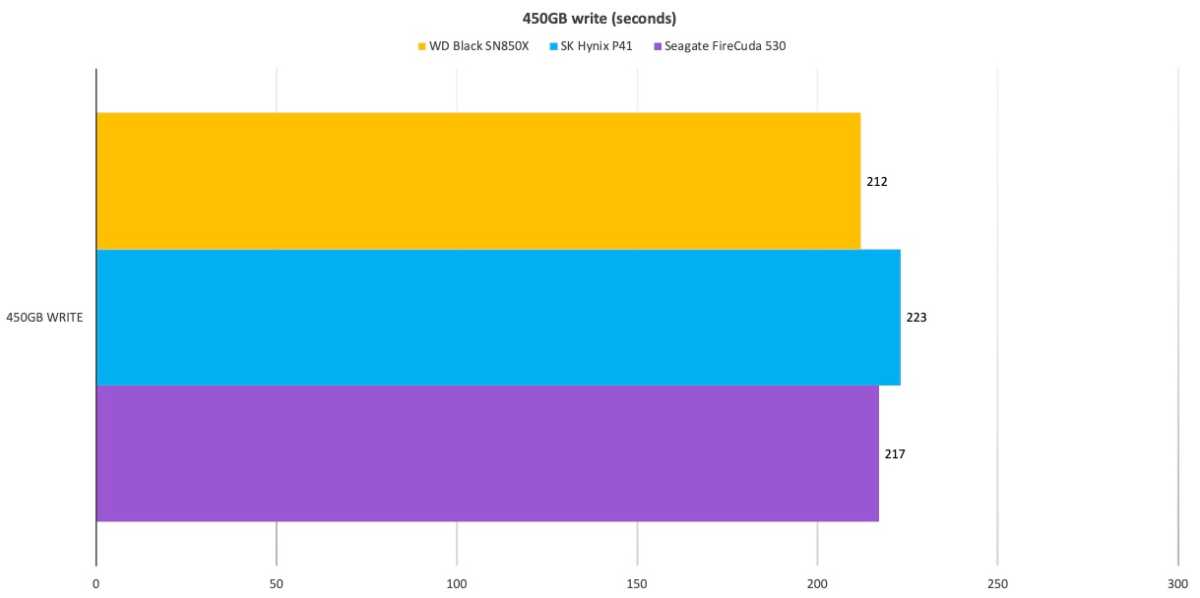
As you can see, the SN850X lacks nothing in performance. What it didn’t show in CrystalDiskMark 8 in terms of sequential throughput, it demonstrated in the real world. As we live in the real world…
Internal drive tests currently utilize Windows 11, 64-bit running on an MSI MEG X570/AMD Ryzen 3700X combo with four 16GB Kingston 2666MHz DDR4 modules, a Zotac (Nvidia) GT 710 1GB PCIe x2 graphics card, and an Asmedia ASM3242 USB 3.2×2 card. Copy tests utilize an ImDisk RAM disk employing 58GB of the 64GB total memory.
Each test is performed on a newly formatted and TRIM’d drive so the results are optimal. Over time, as a drive fills up, performance will decrease due to less NAND for caching, and other factors. The performance numbers shown apply only to the drive of the capacity tested. SSD performance can vary by capacity due to more or fewer chips to shotgun reads/writes across and the amount of NAND available for secondary caching.
Bottom line
If I was choosing a drive to anchor a new test bed, it would be the WD Black SN850X. Random performance is what makes operating systems seem quick, and that is where the SN850X shines. Then again, if I were concerned about warranty/TBW or sequential throughput, the FireCuda 530 might get the nod. Half a dozen, one or the other. Nonetheless, an excellent product from WD.







